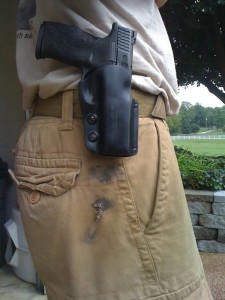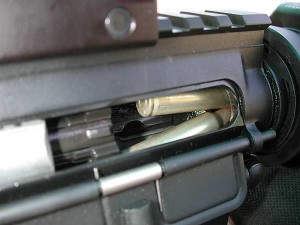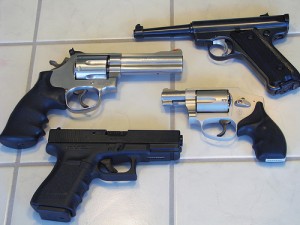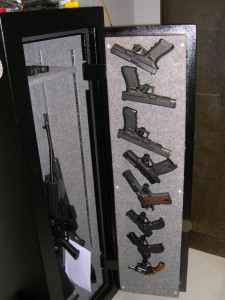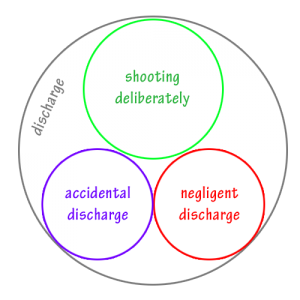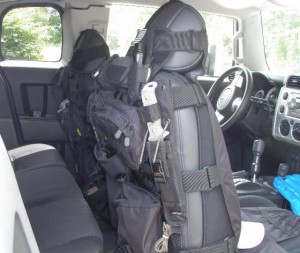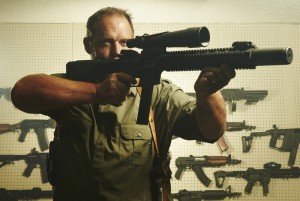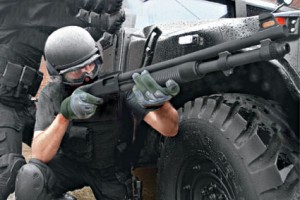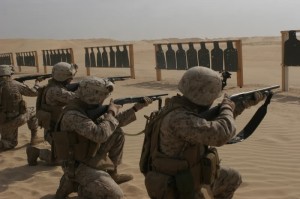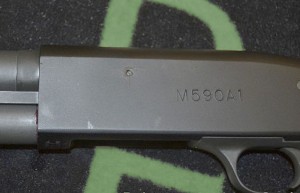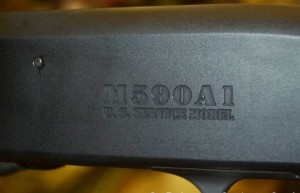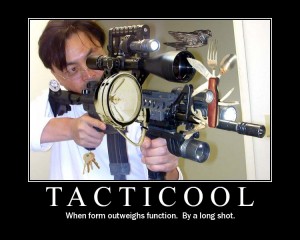I would like to try to summarize some thoughts that I have about the term “accidental shooting” and why so many gun owners find it a clumsy and inaccurate phrasing. A reporter whom I know and respect and with whom I occasionally chat about firearms posted a link on Twitter… Aurora police investigating “accidental shooting” at Rangeview High. Almost immediately, I raised an eyebrow. The term “accidental shooting” is one that I’ve never liked because it almost always involves either one or both of the two biggest errors people can make when thinking about gun safety…
- That firearms have some agency or self-directing ability of their own
- That an unintended discharge of a firearm is just an “oopsie” event
.
What is a Shooting
Allow me to explain further and break things down a bit more. Let’s look at the first term: shooting. To many of us, a “shooting” is a very specific thing. It is a deliberate act wherein one intentionally fires a round from a gun with the goal of striking a target (or in rare instances — like test firing — simply seeing how the gun operates).
Compare the word “shooting” with the word “discharge” … All shootings are a form of discharging a firearm, but I would put forth the notion that not all discharges are shootings. It’s the deliberate, conscious decision to fire a gun intentionally that makes something a “shooting” in my view. It takes a person to fire a gun; the metal device itself has no agency in this world and no means of acting in a deliberate manner all on its own. In other oft-repeated terms, guns don’t just “go off,” they are “discharged” by the act of a person… usually because said person intended it to happen.
Of course, that is not to say that there aren’t other occasions when guns fire without anyone intending them to. However, that brings us to the second half of this phrase which doesn’t sit well with me… “accidental”
.
What is an Accident
I recognize that the term “accident” has broad meaning in our society. A traffic collision is casually referred to as an “accident” whether it’s a small fender-bender or a five-car pile-up. You may have to clean a spot on the floor if a puppy has an “accident” or you may have to hire an attorney if a stevedore at the helm of a gantry crane “accidentally” drops a shipping container onto some dock equipment. It’s quite a wide spectrum of cases which can be called accidents.
But let’s look at how we are raised to think. A child might spill something at the dinner table and become upset, and we would be inclined to comfort them by reassuringly saying, “Don’t worry, it was just an accident… let’s get some more napkins.” This is the definition of “accident” for most people… a situation where they might have been a little careless, but that it’s no big deal and they shouldn’t feel bad for very long. In other words, most of us come to learn that an accident is something from which you might learn a lesson, but you really shouldn’t lose sleep over it.
Contrast that with the notion of negligence. This similar and very related term is often something quite different. “He was a negligent father” has much darker connotations than “He had an accident with one of his kids the other day.” Again, I’m attempting to codify very flexible words into specific definitions, and that’s never easy… but I believe that most people would think someone who is “negligent” is an order of magnitude beyond someone who merely “had an accident.” There’s an aspect of habitual behavior wrapped up with the term “negligent” and the idea that such a person really shouldn’t simply shrug off their misdeeds. Under the law, too, specific facts pertaining to someone’s casual disregard for safety and well-being can lead to a finding of negligence.
Thus, when discussion turns to situations wherein a firearm discharges and this was not someone’s intention, we find ourselves adrift in a sea of potential descriptor terms. And, of course, there is no lack of strong feelings on the part of many writers when it comes to how to best word such a situation. “There is no such thing as an ‘accidental discharge’,” some people will assert. “It’s proper to call them what they are… ‘negligent’ discharges,” they continue, “because being careless with a firearm is an incredibly bad thing and is often criminal!”
.
What Constitutes Negligence
On the topic of “accidental” discharge versus “negligent” discharge, I actually believe there is some room for debate. Yes, virtually all unintentional firings of guns involve some negligence. Consider the following photo…
… there we see someone’s holster and pants which have been subject to serious powder burns and even what appears to be a bullet hole. While I cannot speak to the specifics of this situation (this is a stock image I found on the internet) I would be willing to say that in all likelihood the operator of that gun was being negligent when it fired. Chances are high that they had their finger on the trigger when drawing from their holster.
Of course, there remains the remote possibility that this holster was ill-designed. Maybe the kydex was pressed in too firmly around the trigger area and it was the act of inserting the gun that caused it to discharge. I would assert that this would be also still be negligence (what kind of person would have a gun loaded and chambered the very first time they attempt to place it in a brand new, untested holster??) but I think it would be to a lesser degree.
The truth is, there are some very remote situations wherein a gun can fire a round without anyone’s intention even while it is being operated according to all best practices. Don’t believe me? Consider something like a catastrophic extract malfunction and misfeed…
… these are rare occurrences to begin with, and the possibility of one round’s tip banging into the rear of a previous shell casing is highly remote. But I wouldn’t bet that it’s never ever happened throughout the course of history. More feasible would be a firearm with a malfunctioning firing pin and/or trigger assembly which could spontaneously strike a round when the action is being slammed shut. Old revolvers were known to sometimes have the muzzle flash from an intentionally-fired round cause powder of other rounds elsewhere in the cylinder to ignite. Also, if a firearm is operating at a temperature range outside of what is anticipated, the propellant within a casing can “cook off” just by the act of the round being loaded into the hot metal of the chamber. Particularly dated firearms without modern safety interlocks could discharge a round if dropped, too.
Now, in all such cases, the discharge might be accidental… but if proper handling practices are being followed the gun would be pointed in a safe direction at all times and everyone in the area would be treating the gun as if it were loaded no matter what, so it is unlikely that anyone could be harmed. Thus, thankfully, we wouldn’t be talking about a situation of negligence.
Interestingly, I don’t know what I might call a scenario when a round discharged accidentally… but due to other factors of negligence someone was harmed. I would likely still think of that as an “accidental discharge” but see it as coupled with “negligent use/handling of a firearm” and would still see the operator as liable.
.
Negligent Hands
Thus, to me, all of these “accidental shootings” are really most likely what I would call “negligent discharges” because someone is not intentionally trying to fire the gun (a.k.a. they are not “shooting”) but they are in fact handling or operating the gun (and doing so unsafely… a.k.a. “negligent”). And, indeed, if we read the text of the article linked at the top of this post, we see…
The [person who caused their vehicle passenger to be shot in the leg] has a second job as an armed security guard, and while moving his gun to the glove box, the weapon fired, police said.
… this is quite telling. We see that the gun owner was actively handling their firearm — it wasn’t just sitting somewhere — but they were not (at least allegedly) attempting to shoot it. The very final wording is also common in news reports: “the weapon fired” states the author, a phrase that imparts some degree of spontaneity and/or agency to the firearm itself. I’ll admit, it would be quite prolix and cumbersome to say “while moving his gun to the glove box, he unintentionally caused a round to discharge,” but such news copy would make for more honest reporting, in my view.
The use of passive voice — the weapon fired — instead of active verbiage — he or she fired a round — contributes to the notion that guns are dangerous in and of themselves. Of course, I recognize that this is a widely-held view embraced by many people. However, to those of us who have grown up around firearms and see them simply as inert objects, such wording does sometimes generate frowns.
Here we see a photograph of some guns sitting on a countertop…
… with no one’s hands upon them, are they dangerous? If no one were to reach out and touch them, would any of these handguns wind up in a news piece reporting that the weapon fired? To a person who is deeply-immersed in gun culture, the answer would be a resounding ‘no’ and we would not think of any of these guns being involved in a story about an “accidental discharge.”
Well, if we wanted to be fully confident of that, it might be worth stating that leaving guns out in the open on a counter is not the wisest course of action a lot of the time. We cannot see a wider view in the above photo, so it is not possible to tell if the owner is standing nearby, but perhaps I would be remiss if I didn’t include my own assertion that in most situations, leaving guns unattended and loaded would wind up back in the “negligent” side of the equation. So perhaps it’s best to drop in a photo such as this…
… yes, I recognize that there are legitimate situations wherein a defense gun is not kept locked-up, but for the most part the above image illustrates the best means of guarding against any kind of negligent discharge — not to mention theft — and I advocate the use of secure enclosures for most of your gun collection in almost all situations.
.
Venn Diagram Time
The internet can be counted on to provide this type of diagram with some regularity, so I created one which is specific to the topic that I’m attempting to address…
… so here we see my views, in a nutshell. All of the above situations represent some kind of discharging of a firearm. But the sub-categories are quite separate from one another and feature virtually zero overlap.
- Shooting is a deliberate act: one points a weapon in the direction intended and makes the decision to fire a round. Whether you’re talking about a justified shooting or a criminal shooting or a careless firing into the air — please, never do that — these are all part of the green circle.
- The purple circle would be the smallest part of this Venn diagram, were things drawn to scale. Virtually no situation nowadays is an “accidental discharge.” These are those very rare times when a mechanical malfunction happens and a round unexpectedly fires without fault or carelessness on the part of the operator. Appropriate handling of the firearm and following of proper safety precautions would mean that no one would be injured, of course.
- The red circle represents what are most commonly referred to as “accidental shootings” in the media, when in fact they are seldom mere “accidents” and I don’t think they typically qualify as “shootings” either. However, I recognize that reporters are in a tight spot when attempting to describe such incidents in a manner that is palatable to their editors, their producers, and even their audience.
Even if the media is too entrenched in this parlance to change what name they use for such incidents, it would be at least slightly more helpful if news items were worded in a way that recognizes and identifies a person’s actions as the root cause … instead of reporting that the gun “just went off” to the shock of everyone involved, including the individual who was holding it in their own hands at the time.


